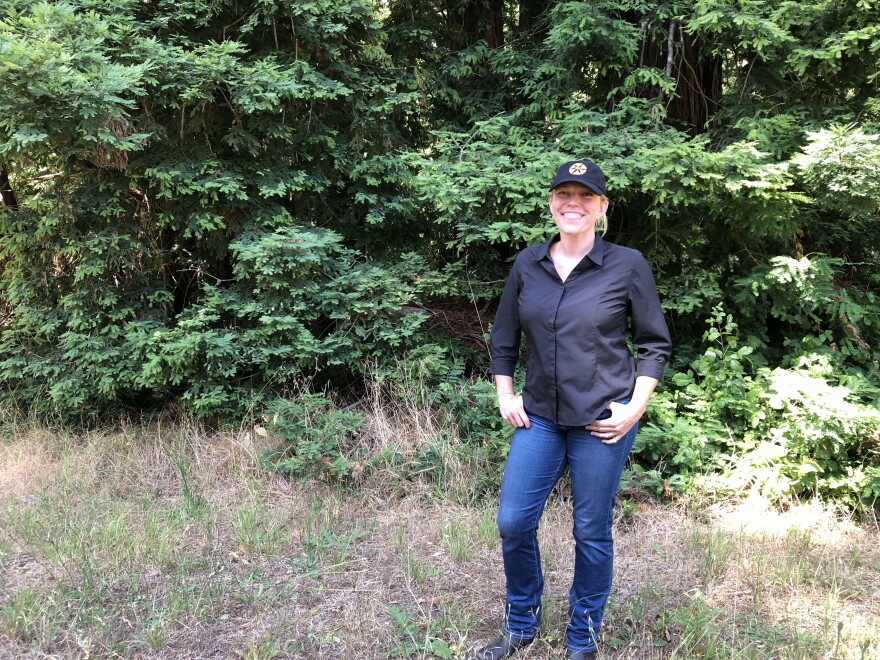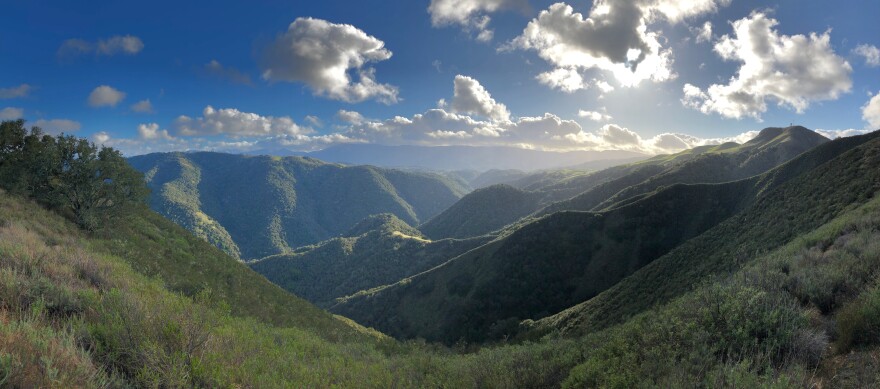Wildfire season is very much upon us here in California. So far this year, CAL FIRE has responded to over 3,900 fires, which have burned over 34,000 acres. Managers of a small preserve in Carmel are hoping to change the way communities approach wildfires across the state by instead focusing on wildfire management and mimicry.
The Santa Lucia Preserve is a 20,000 acre private community in Carmel that encompasses much of what the Central Coast is famous for -- oak savannas, redwood forests and hills that are either green, golden or multi-colored depending on the season. Those who work on the preserve call it a conservation experiment.
“A bold, out of the box approach to living with nature,” said Dr. Christy Wyckoff. She’s the deputy director of the Santa Lucia Conservancy. The nonprofit manages much of the land on the preserve.

One of the ways the preserve is trying to experiment with living with nature is through their approach to wildfires. The conservancy, and its partners, recently received a number of grants that will go towards their continued efforts to change the way we approach wildfires in California.
“I don't worry about the acreage that burns. I worry about the intensity of those fires,” said Wyckoff.

For Wyckoff, it’s about coexisting with fire. Because, she says, in California it’s not a matter of if, it’s a matter of when.
To see these efforts in practice, Wyckoff takes me on a tour. First stop -- a grassy ridge that overlooks one of the six creeks in the preserve. This ridge has undergone mastication recently, which is when a huge lawn mower grinds up all the vegetation. Cattle have also been grazing on the land, and soon they will have a prescribed burn.
These practices are all part of Wyckoff’s toolbox of fire mimicry. When put to use, during a wildfire, the land will look like a mosaic.
“And what I mean by a mosaic is that it will have different patches where if fire comes in, it will burn at different intensities and it will provide opportunities for firefighting, but also for the natural world to respond differently. There are species that love fire,” said Wyckoff.

When wildfires burn in this mosaic manner, there won’t just be toothpick trees left. Instead, some vegetation will survive, seeds will sprout from the ashes, and birds and mammals will explore what the not-so-severely burned areas have to offer. It also means there is less risk of mudslides.
Stop two on the tour is one of the preserve’s forests, which is filled with oak trees, poison ivy, elderberry plants and much more, growing 15 feet above our heads.
“It's got great biodiversity in it, but it hasn't burned in decades. And so there's a lot of fuel buildup in these areas,” said Wyckoff.
Many of these forests line the windy roads in the preserve and roads are a risk for fire ignition - a spark from a car or a stray cigarette. Roads are also essential in firefighting. So, the preserve created a 15-foot fuel break alongside the road.
“By pushing the vegetation back from the edge of the road, we are creating a safe passage,” said Wyckoff.
The breaks allow residents to evacuate and firefighters to come in. You don’t want roads to become impassable.

“If you have an area where there is heavy vegetation on either side of the road, the fire department does not want to risk their people... putting them in areas where they could get trapped,” said Wyckoff.
For Jamie Tuitele-Lewis, the forest health coordinator for the Resource Conservation District of Monterey County (RCDMC), these approaches are about having wildfires that are manageable.
“Instead of having hundred foot flame lengths coming at you, you have 10 foot flame lengths,” said Tuitele-Lewis.
The RCDMC is one of the partners with the Santa Lucia Preserve on the grants.

“What these treatments do is essentially buy time for people to either evacuate or defend their homes and property, depending on the situation,” said Tuitele-Lewis.
Dr. Christy Wyckoff hopes that what they are doing on the preserve can be a model for the rest of California. And actually, some of these tools, like mastication, cattle grazing, roadside fire breaks and prescribed burning, are already gaining popularity.
“Folks at the state level are recognizing prescribed burning as a valuable tool,” said Devii Rao. She's a livestock and natural resources advisor at the University of California Cooperative Extension.
Rao is in on the grants that the Santa Lucia Preserve and partners received. She’ll be helping create a Central Coast Prescribed Burn Association, which will focus on teaching others how to do these types of burns.
“They will be able to learn how to use a drip torch, learn how to use hand tools, learn how to use a backpack sprayer. And so they're going to get in there and light some fire under the guidance of a very experienced burn boss and several other people,” said Rao.
And the benefits of training like this goes beyond managing wildfires.
“Some ranchers might want to improve the grass forage for their cattle. So that could be one of the goals we can achieve. Another person might want to control weeds, so we can achieve that goal with burning. Some people might want to improve habitat for some rare animal or plant. And so burning can modify the soil and modify all kinds of things related to habitat,” said Rao.
And so far, there’s been massive interest. 180 ranchers, academics and land management staff signed up for a recent workshop.
No matter the tools that are used, for all involved, it's about creating a landscape or what they call a ‘firescape’ that creates manageable fires and not catastrophic ones.



